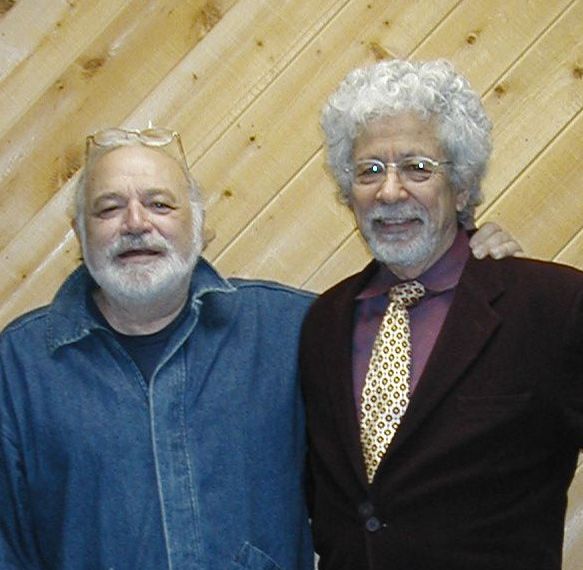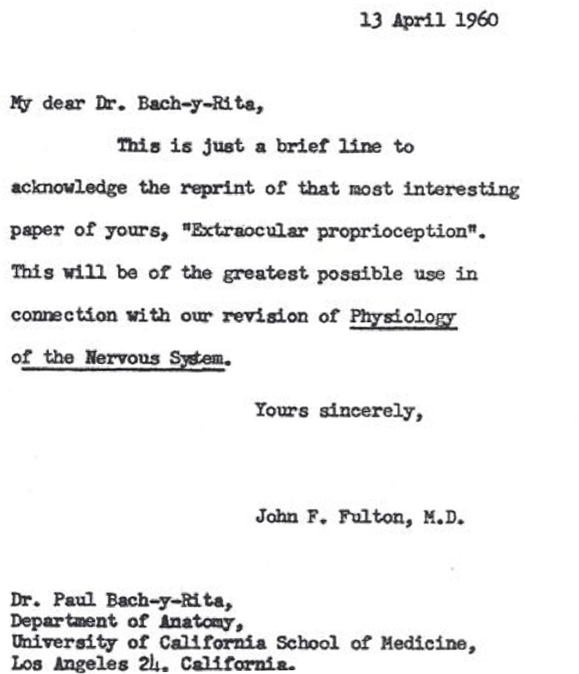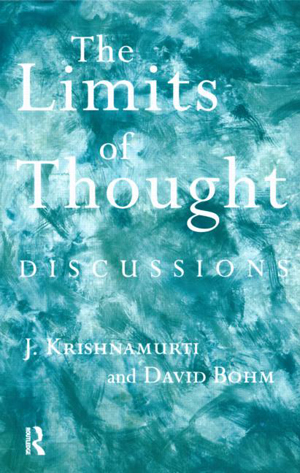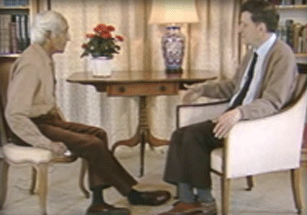Chapter Ten—The Proprioceptive Self

This photo was taken the morning after Paul Bach-y-Rita telephoned his friend Bill Angelos from a hospital where he’d been informed that he had inoperable lung cancer. That is a not a “brave face” facade that was captured by the camera. It is rather an outward manifestation of my friend Paul’s indomitable spirit—which permeated every aspect of his life.
There was an unspoken yet palpable feeling of inevitability that Paul Bach-y-Rita and I both sensed from the very beginning of our reconnecting after more than half a century. Although each of us had pursued careers that couldn’t have been more different, the manner in which we fell into lock step when we decided to join forces in early 2003 was quite comforting to both of us. I recall his daughter Andrea remarking about it in a warmly perceptive way when, about a year after our reconnecting she said, “I’m glad you came along when you did, Dad needed a friend.”
During the two years we worked together, of all the many moments when that inevitability revealed itself, without a doubt, the single most important of them all was when we stumbled on a word that had played an important role in each of our lives many years before we reconnected, and was now about to take center stage again in our co-exploration of Paul’s amazing invention.
I can’t remember who mentioned the word “proprioception” first, but I would soon learn that the word appeared in a paper Paul had written while he was still in Medical School in Mexico, way back in 1960. The paper was written in Spanish, but its content was so insightful and unusual, beginning with the inclusion of the word in its title, that it attracted the attention of the head of the Brain Research Department at Harvard University—Dr. John F. Fulton. Fulton called Paul and asked if he would send him a translated copy of his paper.
He explained that his now deceased colleague, Nobel Laureate Sir Charles Sherrington, the man who had initially identified and actually coined the term “proprioception” half a century before, did so while studying the very activity that Paul’s paper was about—proprioception’s relation to extra-ocular muscle activity and eye movement. Here’s a copy of the “thank-you note” Paul received for his endeavors from Fulton:

While I was intrigued by Paul’s understanding of proprioception in the classically accepted physical sense, what heightened both our interests, was when I told him that years before, I had been introduced to the word “proprioception” in an entirely different context by David Bohm.
Proprioception was the cornerstone of a series of annual Seminars Professor Bohm held between 1986 and 1992 on the nature of consciousness. It was during these Seminars that he first introduced the following proposal:
It is generally acknowledged that proprioception is a kind of fundamental awareness of our physical being, which makes possible all of our physical movements. Perhaps then, it may also be possible to develop a similar kind of awareness of our thought processes—which are also forms of movement. He called the kind of awareness he was proposing, “Proprioception of Thought.”
Why would anyone want to develop such a capacity?

One of the recurring themes in the Krishnamurti–Bohm Dialogues which were ongoing for almost 30 years, was an inquiry into the nature and limitations of the thinking process and the inherent flaw in a system that uses thought to solve problems caused by its limitations.
Example: If you click on the play button below, you’ll hear a very brief one-minute clip from the beginning of one such dialogue. Bohm mentions a question psychiatrist David Shainberg has raised about “fragmentation,” which is a necessary basic action of the entire cognitive process in our everyday lives. Fragmentation makes it possible for us to abstract “things” from the whole of what we perceive. We then give these abstracted things names, i.e. “book,” “chair,” and the naming facilitates our ability to interact with them, personally and culturally—that is, if one understands the language.
The “screen” you are reading this on is part of a “computer” that’s probably sitting on a “desk” or “table” which is located in a “room” that’s in a “house” or “apartment” that itself is located in a “country” on the “Planet Earth,” which is part of the entire “Universe.” Fragmentation is what makes it possible for us to abstract or separate all these “things” from the whole of our awareness, as I just did, then name and subsequently interact with them. It also makes possible the simple act of reading this sentence.
But fragmentation also creates arbitrary psychological divisions which can cause major problems, including one that we’ve all been victims of in one way or another—and which is now running rampant on a global level. It is the source of most of the problems we encounter in our personal lives and interactions. And it is often honed to the level of a skill, by the leaders of nations and religions—and their followers: self-deception.
A classic example is Adolph Hitler’s skilled use of it, when he repeated “Deutschland über alles,” and other phrases like it—over and over—until they were accepted as facts in the minds of a nation; an acceptance that made possible the extermination of more than six million human beings. Self-deception, on the other hand, is also what is making possible—at this very moment—the denial, by millions of others around the world, that such an atrocity ever took place.
Psychiatrist Shainberg’s question in this excerpt focuses attention on that source:

The Krishnamurti–Bohm dialogues led to inquiries into the possibility of bringing into play a form of non-verbal insight that might be able to not only perceive the dangers of self-deception caused by fragmentation, but to develop a capacity for the avoidance of those dangers, much like one sees the edge of a cliff and knows not to go beyond it. Studies with infants, like the ones conducted by Gibson’s wife Eleanor, have shown that such an awareness is indeed learned at quite an early stage of development, as the body learns how to move itself.
From the time we are born into this world, we begin developing an awareness of how to move our bodies. Watch a newborn as it attempts to control its movements and compare it to its capabilities to do so at 6 months and then when it begins to crawl and then walk. That is all learned behavior.
But what is learned is not accumulated in the form of “data”; that kind of learning seems to be of an entirely different nature. Once the process—for example crawling—is understood, it doesn’t have to be re-called by thinking—it becomes an innate aspect of the subject. It’s called perceptual learning and it’s what proprioception does on a physical level—that is, with the body. Many athletes approach this proprioceptive form of learning in an open-ended fashion—often with spectacular results.
Bohm surmised that since thought is a material process whose primary characteristic is also movement—try paying attention to a thought—it quickly moves to another thought and another… perhaps what Krishnamurti and he were talking about was the possibility of developing a similar non-judgmental, psychologically proprioceptive approach to watching thought. If this was possible, a similar kind of learning about the process of thought might also take place—with similarly open-ended results.
Here’s an excerpt from Professor Bohm’s 1990 Seminar during which he begins to summarize the aspect of Proprioception and how it might be applied to Thought:
Now, let’s fast-forward to Madison, Wisconsin—2003.
When the term proprioception suddenly took center stage again, I was reminded that Bohm had made the point that it was a capacity that could be accessed by both mind and body. If that capacity was the basis for some kind of learning, perhaps this was a key to understanding how it was possible for Paul’s invention to produce the mysterious “residual effect” of balance that subjects using it were experiencing even after physically disengaging from it. Maybe some similar kind of learning was taking place.
This all took a while to percolate in my mind, until one day I mentioned it to Paul and we were suddenly off on a mutual quest in an entirely new direction—to discover the “core mechanism” of his invention that might be the source of some kind of learning. If this was true, that’s what enabled the subject to maintain their balance even after disengaging from the device—some form of learning was taking place. We soon also observed that this learning in the form of a residual or therapeutic effect was lasting for increasingly longer periods of time… much like the crawler eventually becomes a stable walker and then even a runner. After a few months of observing (and videotaping) subjects, before, during and after their sessions with the device, I began writing a book about our observations.
Prompted by psychologist James J. Gibson’s radical re-interpretation of proprioception, which rejected Physiology’s generally accepted view of it as a purely physically based phenomenon, I titled the book The Proprioceptive Self. When I showed the title and the first few pages of what I was writing to Paul, he responded more than approvingly—he graciously asked if he could write the book with me; certainly validating the notion that this was a track worth pursuing. Here’s the opening sentence of that first Chapter to which Paul responded so enthusiastically:
The Proprioceptive Self
Proprioception provides us with a physical and psychological foundation upon which we can extract self-meaning from all sensory input.
It would only be after both men had passed away that I learned that Bach-y-Rita and Bohm had something else in common, besides their mutual interest in the word proprioception. Back in the early ’60’s although each man’s scientific discipline was light years away from the other man’s, their individual research paths were inspired and informed by the work of the same person, James J. Gibson and his revolutionary insights into Perception. By then, I too was inspired enough to spend the next few years refining my own understanding of Gibson’s work. What you have been reading is the direct result of that inspiration.

The above shot of Paul was taken in 2004 in front of the capitol building in Madison, Wisconsin. I’ve kept the scratches and cracks in as a reminder of the trials our 54-year relationship went through—first as high school classmates and later as colleagues—until life got in the way.
One night around 11 P.M., Paul called to tell me that he had admitted himself into the hospital for a persistent cough that had been plaguing him for months. He said they had just completed a series of tests that indicated he had lung cancer and it was inoperable. This picture was taken after he had begun chemotherapy, which was taking its toll on Paul, as indicated by the loss of that wonderful head of Albert Einstein cum Harpo Marx hair—hence the hat.
This section of this website called “The James J. Gibson Connection” is dedicated to that profound and mutually nurturing relationship, which—in the end—was responsible for opening the door to our understanding of the importance the role of Perception plays, not only in explaining the “core mechanism” of Paul-Bach-y-Rita’s ground-breaking invention, but in every aspect of our existence—including how it affects what life itself means to each of us. And it is that ongoing deeper understanding of Perception that will continue to unfold in these pages that you are now reading.
Afterword
And so, the curtain now falls on the saga of two high-school buddies who reconnected again after 54 years, and for a brief two-year period in their lives, almost touched the stars—together…
Rest well, friend Paul… You may have left our mutual quest as it pertains to your “BrainPort”—which might have been more accurately named “MindPort,” since it actually does most of its magic through a person’s Perceptual Systems and not through the brain… But know that what we learned as a result of our reconnecting, is a foundational Prologue to what follows…